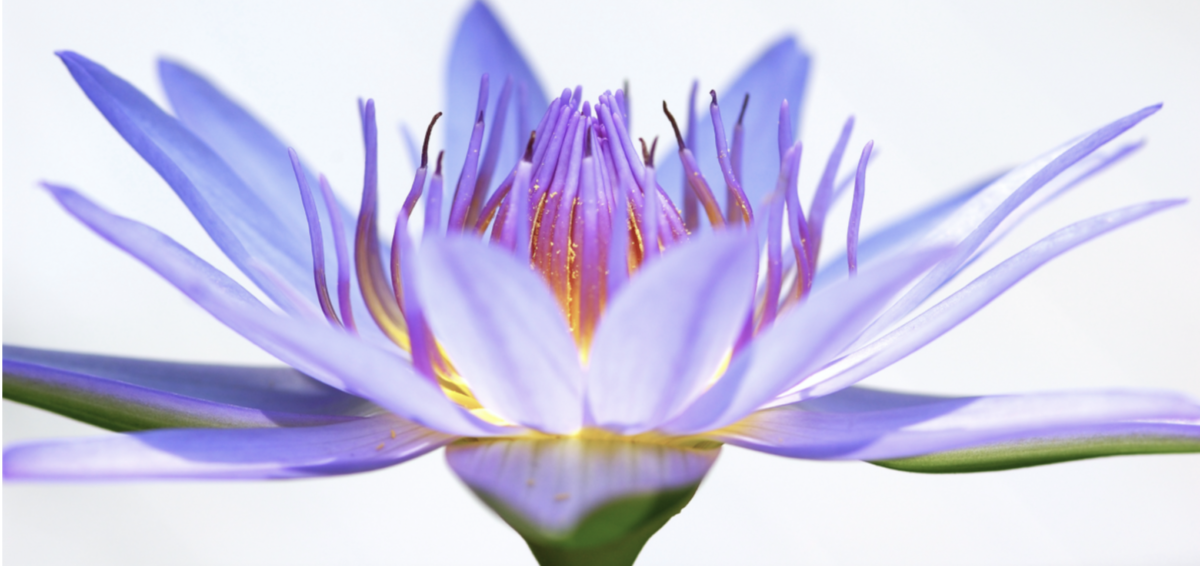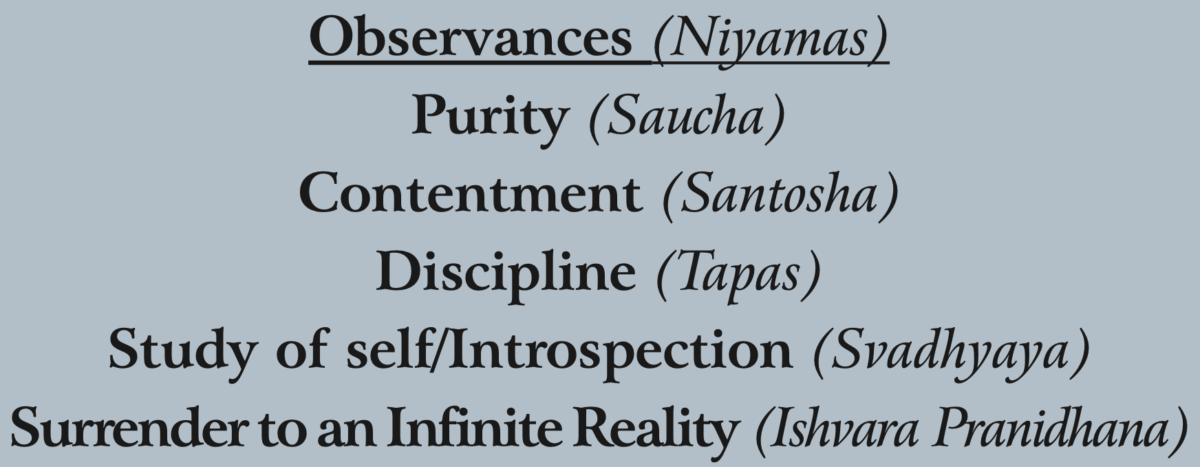Yoga: A Lifestyle of Practice

If you use the word yoga in an average conversation today, you are likely to come across different perceptions and definitions of what yoga is or is not. In Western culture Yoga is often conflated with general concepts like health, stretching and exercise. You could say that many of the people in America today are doing “Yoga-like Exercises” without a knowing where Yoga comes from or even what the purpose of practice is. There is nothing wrong with this approach, as we all must start somewhere, but it is good to know that Yoga is not just about the physical postures. As a philosophy and a practice, it deals with all aspects of the human experience. When viewed from this larger perspective, we can begin to see Yoga as a lifestyle choice. The lessons that we learn in pose practice bring about a sense of deeper insight and awareness that permeates into daily living and helps us create a sense of connection to something larger than ourselves.
The great Indian sage Pantajali is considered the father of Modern Yoga. His book, The Yoga Sutras describes what is known as the 8-Fold path of Yoga. This path details the basic aspects of a Yogic Lifestyle. Each step is a practical guide that allows practitioners to achieve harmony of the mind, body, and spirit. The first two steps on the 8-Fold path deal specifically with behaviors that can be removed or cultivated to begin the process of purifying the mind. For the purposes of this article, we will focus on the behaviors that are meant to be cultivated and ways to use them in a Yoga practice.
The observances (niyamas) are the second step of the 8-Fold Path and, with the restraints (yamas), form the foundation of spiritual practice. The observances are positive behaviors that can be use as guidelines for practice and in daily life.

The five observances are governed by the first: purity. On a physical level we practice purity through healthy food choices, adequate water intake, regular exercise, relaxation, proper hygiene, etc. The cultivation of purity in the mind comes through positive thinking, including healthy choices about what we mentally consume, like the television shows we watch, the music we listen to and the company we keep. Spiritually, we engage in purity through yoga practice, or through prayer, meditation, inspirational readings, and community activities.
To purify the body in yoga practice, focus on the breath. A complete exhalation eliminates toxins, carbon dioxide and stale air from the lungs, while inhalation oxygenates the blood throughout the body. Deep breathing promotes relaxation and releases tension. The energetic channels (chakras) are also balanced and cleansed. Purifying yoga practices increase body awareness, resulting in a natural desire to take better care of the body, mind, and spirit. With practice, the mind focuses easily and is not distracted by desires or sensory input.
Contentment is the art of appreciating what we have and desiring no more than what is necessary for maintaining our life. It is neither a state of like nor dislike, but simply being and delighting in our ability to radiate inner harmony and love. Contentment is choosing to see the positive in life. In yoga practice, we can appreciate the body and mind as it is. Balancing poses make us newly grateful for having two legs and feet. Moving the hands reminds us of our appreciation for all they touch, do, create, hold, and heal. Awareness of the breath brings gratitude for the gift of life. Integrate the attitude of contentment into your yoga practice and daily thought processes and notice how it affects your experiences.
Discipline, in yogic philosophy, can be translated as meaning “to generate light or heat”. This refers to the psychic energy generated by the voluntary practice of various disciplines that purify the body and mind and generate spiritual radiance. Motivation to go to yoga class or commit to home practice finds it original power from discipline. Dietary changes usually require a good amount of discipline as well. Notice that some life practices require more discipline than others. In yoga class, Sun salutations are a classic example of poses that “raise heat” or encourage a sense of discipline, as are warrior poses.
The underlying theme of the observances, purity, may be misunderstood as soft and easy. As a result, people may see discipline as conflicting with the overall goal of purity because of the intensity of discipline. In other words, if we are being harsh and critical to maintain discipline, are we practicing purity? When discipline is understood as power or effort, then it becomes the driving force of purifying actions. It is common that childhood experiences bring a penal view of discipline. As adults, it is possible to recognize discipline as a virtue. The Yoga Sutras 2:43 states, “with discipline, impurities are eliminated, and perfection gained.” This ultimately coalesces into the development of the subtle senses of intuition, grace, unity, and harmony in the body and in life itself.
Study of self or introspection means self-observation and inquiry without judgment. This behavior provides an opportunity to become aware of the various effects of thoughts and behavior. For example, in practicing introspection, we might notice that eating refined sugar has an energizing effect, followed by a lethargic effect, leaving us feeling cloudy-headed and sleepy. Sometimes, self-study helps us to distinguish between perceptions and reality – we may feel depressed or irritated but can recognize such an emotion as separate from who we really are. In this way, we can respond with a wise understanding from the true Self. Meditation and reflection upon sacred texts offers a chance to learn from others who have gone before us and experienced many of the same life lessons. To read such sources directly offers a chance to connect to the energy and inspiration of those who were divinely inspired. It is sometimes said that when we practice yoga poses, we are practicing with all others who are practicing in that moment, as well as throughout history. In such a way, within each pose, we connect with an ancient wisdom and spiritual energy that increases self-awareness and direct experience with a Higher Reality.
With the final observance, surrender to an infinite reality, letting go is a key action. When we accept that our limited human minds are ultimately not in control of reality, we surrender our ego to a higher principle. Whether we believe it to be the Universe, Higher Self, Nature, God, Goddess, Krishna, Allah, Buddha or Jesus, this higher principle is a very personal choice. In yoga poses, “letting go” can be practiced while exhaling in poses that release tension. Here we can cultivate faith by learning that the world does not rest on our shoulders or even revolve around us. Going deep into a yoga pose does not come through effort, but through surrender.
In considering the five observances, which one inspires you the most? Perhaps the principle of contentment encourages you to trust that your yoga practice is exactly where it needs to be, even if you can’t contort your body like other students in the class. Or maybe discipline resonates with a need to establish a home yoga practice in addition to going to class. Choose one of the five observances as your intention for practicing yoga, or alternatively, any positive concept that motivates you on a deep level. Take it out for a test drive to see if it resonates into the depths of your soul.
While I suggest using this intention for a designated time period me, know that you can always change your intention. If you’re feeling weak one day, you might adjust your intention to having courage to practice yoga. Or if you’re filled a deep sense of gratitude, you might hold the intention of offering gratitude to the world through each yoga pose. The most important thing to keep in mind in using intention in your practice is that it is heartfelt and sincere. As you practice, notice how embracing an intention wholeheartedly spills over into the way you understand other areas of your life and watch your yoga grow into a lifestyle practice!
Partial Excerpt from The Pure Heart of Yoga: Ten Steps to Transformation by Robert Butera, PhD (Llewellyn Worldwide, September, 2009)
